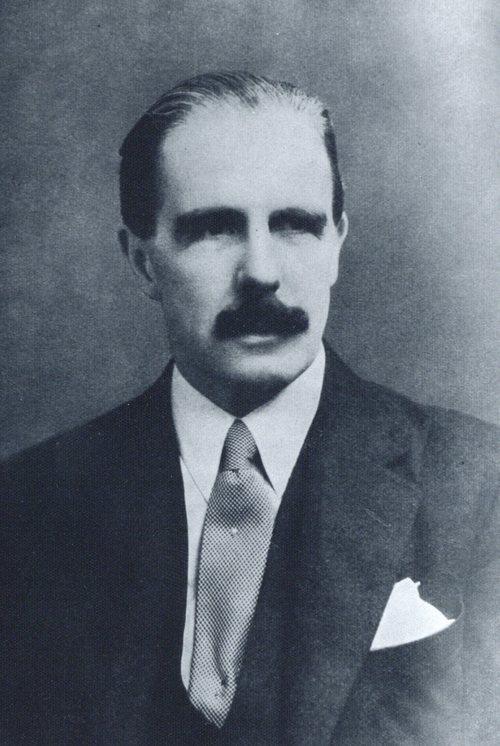Auction: 17001 - Orders, Decorations and Medals
Lot: 249
An interesting Great War D.S.O. group of nine awarded to Colonel E. E. B. Mackintosh, Royal Engineers, an innovative Director of the Science Museum (1933-45) who introduced popular temporary exhibitions and oversaw the evacuation of two thirds of the Museum's more valuable possessions to some 30 different locations on the renewal of hostilities: a man who found 'sermons in stones and good in everything', he was also responsible for getting his Corps to change its colours from 'the voyant scarlet and blue' to the correct dark-red and blue of the Waterloo Medal riband
Distinguished Service Order, G.V.R., silver-gilt and enamel; 1914-15 Star (Capt. E. E. B. Mackintosh, R.E.); British War and Victory Medals, M.I.D. oak leaf (Lt. Col. E. E. B. Mackintosh); War Medal 1939-45; Jubilee 1935; Coronation 1937; Turkey, Order of Osmanieh, Fourth Class breast badge, silver, silver-gilt and enamel; France, Legion of Honour, Chevalier's breast badge, silver, silver-gilt and enamel, this last re-enamelled on one arm and with damaged arm points, otherwise generally very fine or better (9)
D.S.O. London Gazette 1 January 1917.
Ernest Elliott Buckland Mackintosh was born near Chupra in Bengal on 3 November 1880, the son of Ernest Alexander Mackintosh, an indigo planter in Bihar, and Gina, the daughter of the founder of Calcutta Zoo. Educated at Temple Grove and Eton, where he was a King's Scholar and excelled at sports, Mackintosh passed into the R.M.A. Woolwich aged 16 years.
Commissioned in the Royal Engineers in the summer of 1899, he was posted to Malta, from whence he was invalided home in 1902. A spell of duty having ensued back in the U.K., including an appointment as Brennan torpedo officer at Gravesend and as Adjutant of the Thames Sub-Mining Militia, he was seconded to the Egyptian Army in 1906.
So ensued a lengthy period of service in Egypt and the Sudan, commencing with an appointment as Assistant Engineer for the construction of Port Sudan. Later he was transferred to the Upper Nile and Mongalla, where 'he found big game shooting almost on his doorstep' (his obituary notice in the Royal Engineers Journal, refers).
In 1908, Mackintosh was appointed A.D.C. to General Sir Reginald Wingate, Sirdar of the Egyptian Army and Governor-General of the Sudan, a challenging appointment that witnessed four sets of 'Royalties' visit the palace at Khartoum in one winter's season alone. Three years later he joined the Headquarters Staff under Colonel Asser as D.A.A.G., becoming A.A.G. in 1913 and serving in both Khartoum and Cairo. He was awarded the Fourth Class Order of the Osmanieh (London Gazette 11 November 1913, refers).
Of his subsequent part in the Great War, his obituary in the Royal Engineers Journal states:
'He was retained by the Egyptian Army on the outbreak of war, with all other British officers, but finally was released to come home early in 1915. He served in France in command of a Field Company, and, on the formation of Fourth Army Headquarters, as staff officer to the Chief Engineer, his uncle General Buckland. After some months in England with rheumatoid arthritis, he returned to France as an Assistant Engineer-in-Chief at G.H.Q. for the last eighteen months of the war, dealing with personnel matters and organization of new types of R.E. units. He was awarded the D.S.O. and Legion of Honour, the Brevet of Lieutenant-Colonel and mentioned in despatches.'
Following further staff appointments after the Great War, Mackintosh was posted to Hong Kong as Commander Royal Engineers, in which capacity he served from 1925 to 1928. Back home, and following a stint as C.O. of the Depot Battalion at Chatham, he was advanced to Colonel in January 1929. His final appointment, in the temporary rank of Brigadier, was as Chief Engineer Eastern Command, for, in 1933, he accepted the Directorship of the Science Museum at South Kensington.
Mackintosh found it easy to foster the spirit of camaraderie existing among the staff, which included 18 ex-mechanics and foreman of works R.E. An innovative Director, he was responsible for the introduction of popular temporary exhibitions, the whole opened by public figures. On such occasions the Colonel was in his element and the resultant publicity led to the Museum being one of the most visited in the world.
Having been briefly called away in 1939-40, when he became Commandant of the School of Military Engineering at Chatham, he at once set about overseeing the evacuation of two thirds of the Museum's more valuable possessions to some 30 different locations in the west of England and Wales, a formidable task under wartime difficulties of staffing and transport.
Following his retirement from the Museum in 1945, Mackintosh pursued his hobbies, among them Chinese art and old English glass. Blest with a quick - and sometimes witty - tongue, he died in November 1957; sold with a file of copied research.
References:
Nature Magazine, 4 January 1958
The Royal Engineers Journal, Vol. LXXII, March 1958.
Subject to 20% VAT on Buyer’s Premium. For more information please view Terms and Conditions for Buyers.
Estimate
£1,800 to £2,200







